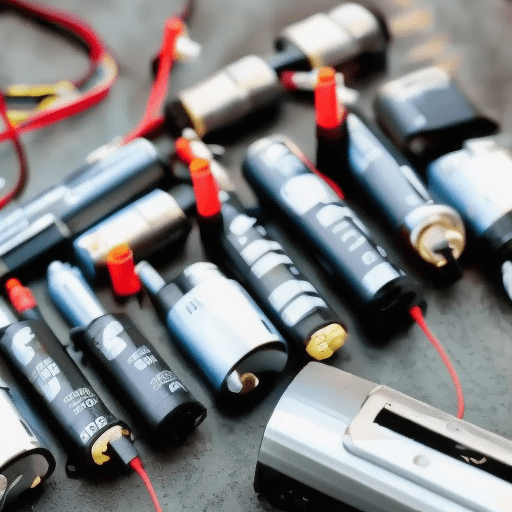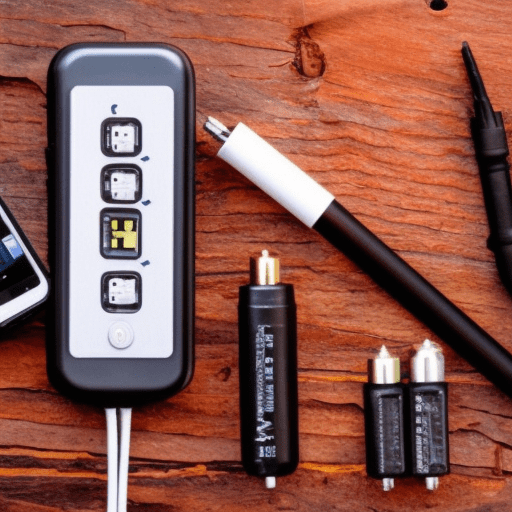There are many different battery sizes on the market, and it can be difficult to keep track of them all.
This blog post will discuss the most common battery sizes and what you need to know about them.
We will also list some of the best batteries for each size!

Battery sizes can vary greatly, depending on the type of battery required for a specific device or application. AA, AAA, C, D, and 9V are the five most common battery sizes.
The most common battery sizes
Batteries come in various shapes and sizes, the most common sizes being AA, AAA, C, D, and 9V.
Explain it to a child
Battery sizes can be different depending on what the battery is being used for. The five most common battery sizes are AA, AAA, C, D, and 9V.
AA batteries are the most popular, likely owing to their widespread use in a variety of household and office items.
They’re used to power remote controls, toys, and flashlights, among other things.
AAA batteries are smaller than AA ones but still pack a punch – they can be found in calculators and laser pointers alike.
When it comes to handheld electronics like remote controls or torches, D-sized cells are often used due to their larger capacity and higher voltage than AAs or AAAs.
Similarly, C-sized batteries are slightly bigger than regular Bs or As but provide more energy for certain devices such as radios or outdoor lights.
Last but not least, 9V batteries don’t get nearly as much attention as they deserve; while they can certainly pack a punch as far as energy delivery is concerned, they’re relatively uncommon because few devices require that amount of power.
What you need to know about each battery size
With so many different types of battery sizes, it is important to know what each one has to offer.

Some are great for powering a device that needs long-term use, such as for remote control vehicles or toys, while others are designed for short-term usage in items such as flashlights and smoke detectors.
AAA batteries tend to provide more power than smaller AA batteries but may not last as long on a single charge.
C and D cells are used mostly with large items like radios, clocks, and some tools.
And when it comes to round lithium units, you’ll find a variety of voltage ratings from 1.5v all the way up to 9v and beyond for industrial applications.
Learning about each size battery can help ensure you get the right one for your needs every time!
List some of the best batteries for each size
For those looking to power their devices, choosing the right batteries can make all the difference.
Depending on what size battery is required, there are a variety of options that fit different needs and budgets.
For AAA-size batteries, Panasonic Eneloop Pro Rechargeable Batteries come highly rated for their combination of high capacity and long-lasting performance across a wide range of temperatures.
For AA-size batteries, Energizer Max Alkaline Batteries provide hours of dependable power and leakage resistance.
Finally, for 9V sizes, Vinnic Alkaline Battery offers immense strength in every use case while still providing great value.
Ultimately, when it comes time to power your device with the right battery, depending on the size each of these offers features that make them stand out among their peers.
What happens if you use the wrong size battery?

When you use a battery that’s too big or too small for the device you are charging, it can be disastrous.
An incorrect-sized battery may not be able to hold the proper amount of charge and will cause the device to shut down unexpectedly.
It also increases internal pressure in the device, sometimes leading to explosions or other hazards.
Not only can this damage your device, but an incorrect battery size can potentially create a fire hazard in your home and should be avoided at all costs.
Tips for choosing the right battery size
Choosing the right battery size can be a difficult task, especially when there are so many different variables to consider.

Age, brand, type, and even where you plan to use it all affect what size battery is best for your needs.
To ensure you make the ideal choice, first and foremost look at the specific requirements of the device or system you need to power.
Then consider factors like location, lifespan, and of course safety–making sure that whatever you pick won’t be too powerful for where it’s being installed.
Finally, double-check if your selected battery fits in the casing that is already in place!
By taking a little extra time to understand your needs and do some research, picking the perfect battery size will be easier than ever.
In conclusion, it’s important to know what types of batteries are available when determining how long your device will run off one charge or how quickly it’ll need replacement due to natural wear and tear over time from usage habits.
Article Sources
Jacks of Science sources the most authoritative, trustworthy, and highly recognized institutions for our article research. Learn more about our Editorial Teams process and diligence in verifying the accuracy of every article we publish.
